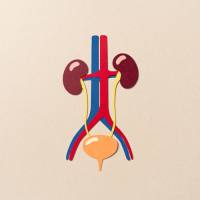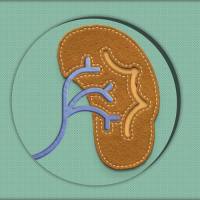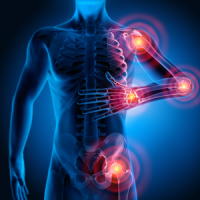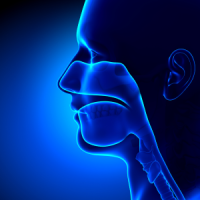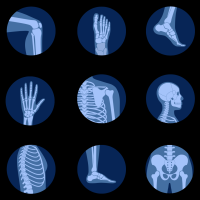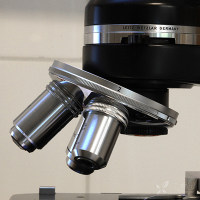脊柱关节炎有哪些典型表现?临床症状全面解析(二)
本篇续接上文《脊柱关节炎有哪些典型表现?临床症状全面解析(一)》(点击跳转阅读前文),继续为大家介绍脊柱关节炎的症状与影像学表现。
三、关节外问题
脊柱关节炎(SpA)患者有很多关节外的问题。包括:眼睛、皮肤、胃肠道、心脏、肺、神经系统、肾脏等。
1
眼睛
最先把HLA-B27、强直性脊柱炎跟葡萄膜炎联系在一起的文献可以追溯到1973年4月的《新英格兰医学杂志》[1]和《柳叶刀》[2]。
与HLA-B27相关的葡萄膜炎特征性表型是突然发作、单侧和反复发作,患者诉眼睛发红、疼痛、畏光、易流泪,视力模糊[3]。
对侧眼可复发,但双眼同时发炎的情况很少见。受累眼的眼压通常较低。单侧复发性前葡萄膜炎的另一个常见原因是单纯疱疹感染,但疱疹病毒感染所致的眼压通常会偏高[4]。
前房纤维蛋白、后粘连和前房积脓也是HLA-B27相关葡萄膜炎的临床表现之一[5]。尽管在HLA-B27相关疾病中,眼内炎症可能是暴发性的,但两次发作之间的视力通常非常好[4]。
对强直性脊柱炎患者发生葡萄膜炎的可能性的估计差异很大,部分原因是这个数字在很大程度上取决于随访的持续时间。如果随访时间超过40年,葡萄膜炎发生的可能性约为50%[6]。
了解患者是否患有HLA-B27相关的急性前葡萄膜炎(AAU),这对提示是否存在SpA的可能性至关重要。有研究发现,2/3与SpA相关的AAU患者不知道他们患有SpA[3]。
前葡萄膜炎(也叫虹膜炎)通常是诊断SpA的线索。法国一项研究纳入了在一家眼科诊所评估的175例HLA-B27相关葡萄膜炎患者,结果显示78%的患者患有SpA,包括46%的强直性脊柱炎(AS),10%的疑似强直性脊柱炎,12%的未分化脊柱关节炎,10%的银屑病或炎症性肠病相关关节病[7]。
葡萄膜炎在炎症性肠病(IBD)[8]、银屑病关节炎(PsA)患者中的发病率确实增加[9]。在这两种疾病中,葡萄膜炎的可能性远低于强直性脊柱炎患者发生葡萄膜炎的可能性。
大约50%的IBD或PsA患者发生葡萄膜炎是HLA-B27阳性[8,9]。这些病人的葡萄膜炎的表型比典型的AS表型要多样化得多。例如,有时诊断为双侧、慢性和/或中间葡萄膜炎。
研究也发现,AAU跟AS的关联性也不只是HLA-B27阳性。比如,AAU先证者的HLA-B27阳性一级亲属(13%)的AAU患病率远高于普通的HLA-B27阳性人群(1%),表明涉及除HLA-B27以外的其他遗传因素[10]。
该研究还发现,AAU先证者的HLA-B27阳性一级亲属(11%)患有AS(如果生活到超45岁);众所周知,HLA-B27阳性者的预期AS频率约为1%,突出了AS和AAU的强烈共家族性[10]。
另一个较大规模病人数的AAU队列证实,HLA-B27阴性的AAU病人也相当比例患有SpA[11];只是HLA-B27阳性者更容易有中轴病变(71%是中轴,22%是外周),而HLA-B27阴性者的外周比例更高(19.5%有中轴病变,11%有外周病变)[11]。
总之,葡萄膜炎患者要高度警惕有SpA;而SpA病人也应警惕葡萄膜炎的可能性。
葡萄膜炎的诊断依赖于眼科专家进行裂隙灯检查,医生一定要记住:葡萄膜炎不一定会和背痛、外周关节炎或附着点炎等骨骼肌肉表现同时发生。
除葡萄膜炎外,SpA还可能易患其他眼睛病变。比如干眼症[12]。
2
皮肤
主要表现是银屑病。实际上,多达10%左右的AS患者存在银屑病[13,14]。研究发现AS患者伴发银屑病时更常出现外周关节受累和指/趾炎,病程可能也比无银屑病患者严重[15]。
这部分在后续银屑病关节炎会单独讨论。
3
胃肠道
SpA与炎症性肠病(克罗恩病和溃疡性结肠炎)有关。一项系统评价显示AS患者的炎症性肠病汇总患病率为6.8%[14]。反过来说,炎症性肠病患者最常见的肠外症状是SpA肌肉骨骼症状[16,17]。
4
其他
AS患者在早期通过高分辨率CT可以看到马赛克样改变、胸膜下结节和肺实质改变,而病程较长的AS病人则可见到肺上叶纤维化[18,19]、间质性肺病、结节病变、以及因肌肉骨骼改变而引起的限制性改变[20]。这些肺纤维化病人可能有咳嗽,呼吸困难,甚至有咳血[21]。
心脏受累可能是无症状的,但仍可能引发严重问题。比如,升主动脉炎、主动脉瓣疾病、传导障碍[22-26]。
神经系统问题主要是脊柱关节不稳定、骨折,以及局部组织压迫、炎症所致。比如,AS患者可能发生有临床意义的自发性寰枢关节(C1-C2)半脱位,如未识别和固定,会导致脊髓受压。一项纳入103例患者的研究发现,寰枢关节前半脱位和寰枢关节后半脱位的患者比例分别为21%和2%[27,28]。
马尾综合征是AS的罕见并发症,通常见于病程较长的脊柱明显强直的患者[29,30];症状由腰骶神经根损伤导致,很可能由蛛网膜炎引起。患者通常诉有皮肤感觉异常、肠道和膀胱控制问题以及阳痿。
AS患者还可出现非特异性肾小球病、IgA肾病、以及罕见的肾淀粉样变性[31-33]。
四、影像学表现
影像学检查是为了确定病变的性质,排除感染性疾病,肿瘤性疾病,机械性病变等。其检查方式有X光片、CT、磁共振等。检查的部位主要是骶髂关节、脊柱关节、以及具体受累的某部位。
骶髂关节炎是诊断中轴型SpA的核心要点,典型的脊柱韧带骨赘和其他脊柱炎表现诊断中轴型SpA的特异性也较高,但通常较长病程后才出现,一般不见于病程早期。
其他表现可能包括附着点炎和侵蚀性关节病变,但并非中轴型SpA特有。某些外周型SpA患者即使未主诉背痛,也可发现骶髂关节炎[34]。
根据有无特征性影像学表现可半定量分级骶髂关节平片结果:

图1. 正常的骶髂关节[35]
1级:疑似改变;主要是边缘模糊不清。

图2. 骶髂关节的下三分之一的皮质边缘轻微模糊,骶髂关节炎1级[36]
2级:轻微异常,局部小范围出现侵蚀或硬化,关节间隙宽度无改变。侵蚀通常最先见于髂侧,而不是骶骨侧。

图3. 一个1级骶髂关节炎,一个2级骶髂关节炎[35]
3级:明显异常,中度或晚期骶髂关节炎,伴侵蚀、硬化征象、增宽、狭窄或部分关节强直。

图4. 双侧3级骶髂关节炎改变[35]
4级:严重异常,完全性关节强直。

图5. 双侧4级改变[35]
放射学骶髂关节炎被视为AS的特征性标志,但能否继续用作诊断标准尚存争议。这对中轴型SpA的诊断具有很高的特异性(>90%),但敏感性较低,特别是症状持续时间短的患者:症状持续时间少于1年的患者约为30%,症状持续时间为2-6年的患者约为50%[37]。
尽管骶髂关节的CT可以更精确地(与标准X射线相比)评估结构变化,但它不适合早期SpA诊断,因为无法描述活动性炎症。此外,如果应用常规CT,这种方法容易有相对较高的辐射暴露。
如果常规X线片上没有骶髂关节炎的证据,但仍怀疑中轴型SpA,通常考虑进行骶髂关节MRI检查。MRI的主要优点是检测活动性炎症变化(骨炎或骨髓水肿),这些变化发生在X线可见结构损伤之前数月至数年。另一方面,MRI也可以很好地捕捉到骶髂关节的结构变化[37]。
SpA最明显的骶髂关节MRI表现包括短时间反转恢复序列(STIR)或T2加权脂肪抑制图像上的高信号骨髓水肿(BME)。
水肿通常见于软骨下或关节旁骨髓。而使用T1加权序列可以可视化骶髂关节的结构变化(如侵蚀、脂肪病变、回填、bode芽、强直和硬化)。

图6. 箭头标记骶髂关节的骨髓水肿,表明骶髂关节炎[36]

图7. 观察到骨侵蚀(短箭头)和脂肪化生(长箭头)[36]

图8. 观察到骨侵蚀(短箭头)和脂肪化生(长箭头)[36]

图9. 箭头标记侵蚀腔(“回填”)中的脂肪化生[36]
国际脊柱关节炎评估协会(ASAS)在2009年制定了MRI上活动性SpA相关骶髂关节炎的定义(即ASAS对骶髂关节MRI阳性的定义)[38],此后于2016年[39]、2019年[40]做了更新。
根据这一定义,如果典型解剖区域(软骨下骨)明显存在骨髓水肿,则骶髂关节MRI为阳性,并且骨髓水肿的出现高度提示SpA[38]。
但软骨下骨髓水肿也可能是骶髂关节机械应力的结果,故也可见于健康者、产后女性和其他疾病,例如感染、恶性肿瘤和致密性髂骨炎[41,42]。
典型的脊柱炎相关MRI病变呈三角形,位于椎骨4个角中的一角或多个角。表现为STIR或T2脂肪抑制序列中的BME,以及T1加权序列中呈高信号病变的脂肪沉积。

图10. 脊柱的矢状T1加权(A)和短tau反转恢复(STIR;B)MRI,显示脊柱后外侧部分的炎症[36]
对上图的解释:在图A中,箭头标记了椎体中骨髓脂肪信号明显丢失的区域。在图B中,骨髓水肿出现在椎体前角(直实心箭头),对应于T1加权图像上骨髓脂肪信号丢失的区域。虚线直箭头表示椎体终板骨髓水肿。曲线虚线箭头描绘了小关节的骨髓水肿。
超声技术常用作观察附着点炎症。可以看到反馈炎症的低回声、肌腱附着处增厚和多普勒信号,以及附着点的结构改变(肌腱内钙化和附着点病变)[43]。
在诊断SpA时,影像学检查并不具有决定性。医生必须明白,诊断是基于临床症状、体征。在排除了其他可能时,影像学检查有很大帮助,但并不能单纯依据影像学改变而诊断。
ASAS开发了一个新的教育项目:ASAS病例库(https://cases.asas-group.org/),其中结合临床发现和实验室测试结果详细讨论了影像学检查结果。这对医生理解影像学的价值和意义有很好帮助。
参考文献(上下滑动查看):
[1] Schlosstein L, et al. , High association of an HL-A antigen, W27, with ankylosing spondylitis. The New England journal of medicine, 1973. 288(14): p. 704–6.
[2] Brewerton DA, et al. , Ankylosing spondylitis and HL-A27. Lancet, 1973. 1: p. 904–907.
[3] Rosenbaum JT, Characterization of uveitis associated with spondyloarthritis. J Rheumatol, 1989. 16(6): p. 792–6.
[4] James T Rosenbaum , The eye in spondyloarthritis . Semin Arthritis Rheum. 2019 Dec;49(3S):S29-S31. doi: 10.1016/j.semarthrit.2019.09.014.
[5] D’Alessandro LP, Forster DJ, and Rao NA, Anterior uveitis and hypopyon. Am J Ophthalmol, 1991. 112(3): p. 317–21.
[6] Robinson PC, et al. , Genetic dissection of acute anterior uveitis reveals similarities and differences in associations observed with ankylosing spondylitis. Arthritis Rheumatol, 2015. 67(1): p. 140–51.
[7] Monnet D, et al. , Ophthalmic findings and frequency of extraocular manifestations in patients with HLA-B27 uveitis: a study of 175 cases. Ophthalmology, 2004. 111(4): p. 802–9.
[8] Lyons JL and Rosenbaum JT, Uveitis associated with inflammatory bowel disease compared with uveitis associated with spondyloarthropathy. Arch Ophthalmol, 1997. 115(1): p. 61–4.
[9] Paiva ES, et al. , Characterisation of uveitis in patients with psoriatic arthritis. Ann Rheum Dis, 2000. 59(1): p. 67–70.
[10] Derhaag PJ, Linssen A, Broekema N, de Waal LP, Feltkamp TE. A familial study of the inheritance of HLA-B27-positive acute anterior uveitis. American journal of ophthalmology. 1988;105:603–606. doi: 10.1016/0002-9394(88)90051-7.
[11] Juanola X, et al. , Description and Prevalence of Spondyloarthritis in Patients with Anterior Uveitis: The SENTINEL Interdisciplinary Collaborative Project. Ophthalmology, 2016. 123(8): p. 1632–6.
[12] Antonio Vitale , Valeria Caggiano , Eduardo Martín-Nares , et al. Dry eye disease and spondyloarthritis: expanding the spectrum of systemic inflammatory disorders associated with ocular surface disease. Data from the international AIDA Network Spondyloarthritis Registry . Front Med (Lausanne). 2024 Sep 17:11:1422307. doi: 10.3389/fmed.2024.1422307. eCollection 2024.
[13] El Maghraoui A. Extra-articular manifestations of ankylosing spondylitis: prevalence, characteristics and therapeutic implications. Eur J Intern Med 2011; 22:554.,
[14] Stolwijk C, van Tubergen A, Castillo-Ortiz JD, Boonen A. Prevalence of extra-articular manifestations in patients with ankylosing spondylitis: a systematic review and meta-analysis. Ann Rheum Dis 2015; 74:65.
[15] Edmunds L, Elswood J, Kennedy LG, Calin A. Primary ankylosing spondylitis, psoriatic and enteropathic spondyloarthropathy: a controlled analysis. J Rheumatol 1991; 18:696.
[16] Greenstein AJ, Janowitz HD, Sachar DB. The extra-intestinal complications of Crohn's disease and ulcerative colitis: a study of 700 patients. Medicine (Baltimore) 1976; 55:401.,
[17] Hayward RJ, Machado PM. Classification Criteria in Axial Spondyloarthritis: What Have We Learned; Where Are We Going? Rheum Dis Clin North Am 2020; 46:259.
[18] Quismorio FP Jr. Pulmonary involvement in ankylosing spondylitis. Curr Opin Pulm Med 2006; 12:342.,
[19] Kiris A, Ozgocmen S, Kocakoc E, et al. Lung findings on high resolution CT in early ankylosing spondylitis. Eur J Radiol 2003; 47:71.
[20] Kim DY, Lee SJ, Ryu YJ, et al. Progressive Pulmonary Fibrocystic Changes of Both Upper Lungs in a Patient with Ankylosing Spondylitis. Tuberc Respir Dis (Seoul) 2015; 78:459.
[21] Strobel ES, Fritschka E: Case report and review of the literature: fatal pulmonary complications in ankylosing spondylitis, Clin Rheumatol 16:617–622, 1997.
[22] Eder L, Sadek M, McDonald-Blumer H, Gladman DD. Aortitis and spondyloarthritis--an unusual presentation: case report and review of the literature. Semin Arthritis Rheum 2010; 39:510.,
[23] Slobodin G, Naschitz JE, Zuckerman E, et al. Aortic involvement in rheumatic diseases. Clin Exp Rheumatol 2006; 24:S41.
[24] Vinsonneau U, Brondex A, Mansourati J, et al. Cardiovascular disease in patients with spondyloarthropathies. Joint Bone Spine 2008; 75:18.,
[25] Brunner F, Kunz A, Weber U, Kissling R. Ankylosing spondylitis and heart abnormalities: do cardiac conduction disorders, valve regurgitation and diastolic dysfunction occur more often in male patients with diagnosed ankylosing spondylitis for over 15 years than in the normal population? Clin Rheumatol 2006; 25:24.
[26] Ozkan Y. Cardiac Involvement in Ankylosing Spondylitis. J Clin Med Res 2016; 8:427.
[27] Ramos-Remus C, Gomez-Vargas A, Guzman-Guzman JL, et al. Frequency of atlantoaxial subluxation and neurologic involvement in patients with ankylosing spondylitis. J Rheumatol 1995; 22:2120.
[28] Lee JS, Lee S, Bang SY, et al. Prevalence and risk factors of anterior atlantoaxial subluxation in ankylosing spondylitis. J Rheumatol 2012; 39:2321.
[29] Sant SM, O'Connell D. Cauda equina syndrome in ankylosing spondylitis: a case report and review of the literature. Clin Rheumatol 1995; 14:224.,
[30] Mundwiler ML, Siddique K, Dym JM, et al. Complications of the spine in ankylosing spondylitis with a focus on deformity correction. Neurosurg Focus 2008; 24:E6.
[31] Lee SH, Lee EJ, Chung SW, et al. Renal involvement in ankylosing spondylitis: prevalence, pathology, response to TNF-a blocker. Rheumatol Int 2013; 33:1689.
[32] Strobel ES, Fritschka E. Renal diseases in ankylosing spondylitis: review of the literature illustrated by case reports. Clin Rheumatol 1998; 17:524.,
[33] Levy AR, Szabo SM, Rao SR, et al. Estimating the occurrence of renal complications among persons with ankylosing spondylitis. Arthritis Care Res (Hoboken) 2014; 66:440.
[34] Carron P, Varkas G, Cypers H, et al. Anti-TNF-induced remission in very early peripheral spondyloarthritis: the CRESPA study. Ann Rheum Dis 2017; 76:1389.
[35] Uptodate临床顾问:脊柱关节炎的临床表现和分类
[36] 《Firestein & Kelley’s Textbook of Rheumatology》(第12版本)
[37] Poddubnyy D. Classification vs diagnostic criteria: the challenge of diagnosing axial spondyloarthritis. Rheumatology (Oxford) 2020; 59:iv6.
[38] Rudwaleit M, Jurik AG, Hermann K-GA et al. Defining active sacroiliitis on magnetic resonance imaging (MRI) for classification of axial spondyloarthritis: a consensual approach by the ASAS/OMERACT MRI group. Ann Rheum Dis 2009;68:1520–7.
[39] Lambert RG, Bakker PA, van der Heijde D et al. Defining active sacroiliitis on MRI for classification of axial spondyloarthritis: update by the ASAS MRI working group. Ann Rheum Dis 2016;75:1958–63.
[40] Maksymowych WP, Lambert RG, Ostergaard M et al. MRI lesions in the sacroiliac joints of patients with spondyloarthritis: an update of definitions and validation by the ASAS MRI working group. Ann Rheum Dis 2019;78:1550–8.
[41] Robinson PC, van der Linden S, Khan MA, Taylor WJ. Axial spondyloarthritis: concept, construct, classification and implications for therapy. Nat Rev Rheumatol 2021; 17:109.
[42] Seven S, Østergaard M, Morsel-Carlsen L, et al. The utility of magnetic resonance imaging lesion combinations in the sacroiliac joints for diagnosing patients with axial spondyloarthritis. A prospective study of 204 participants including post-partum women, patients with disc herniation, cleaning staff, runners and healthy persons. Rheumatology (Oxford) 2020; 59:3237.
[43] Seven S, Pedersen SJ, Østergaard M, et al. Peripheral Enthesitis Detected by Ultrasonography in Patients With Axial Spondyloarthritis-Anatomical Distribution, Morphology, and Response to Tumor Necrosis Factor-Inhibitor Therapy. Front Med (Lausanne) 2020; 7:341.







